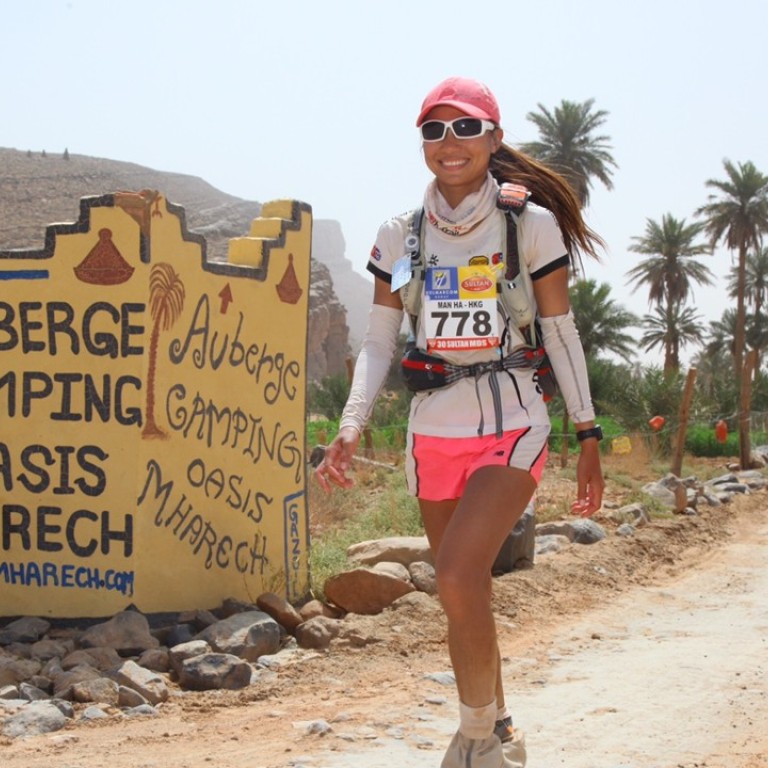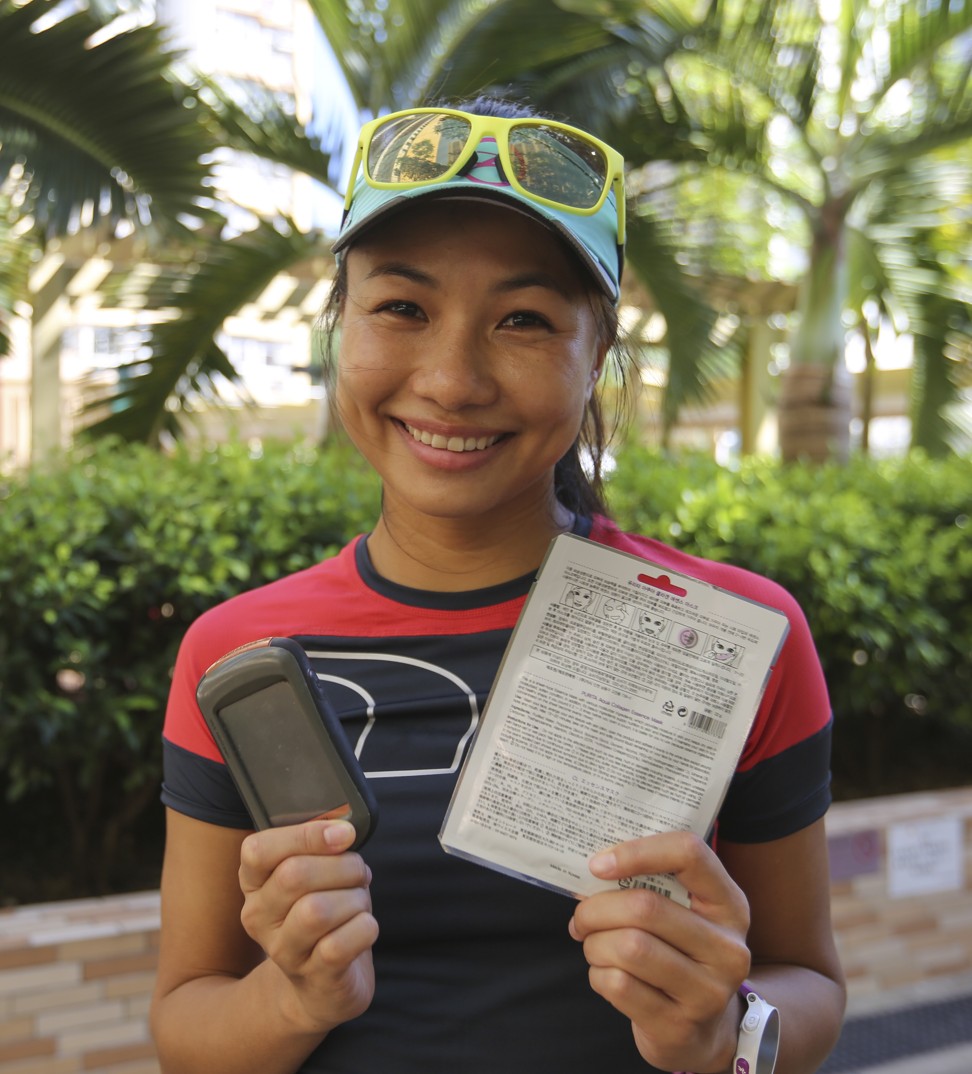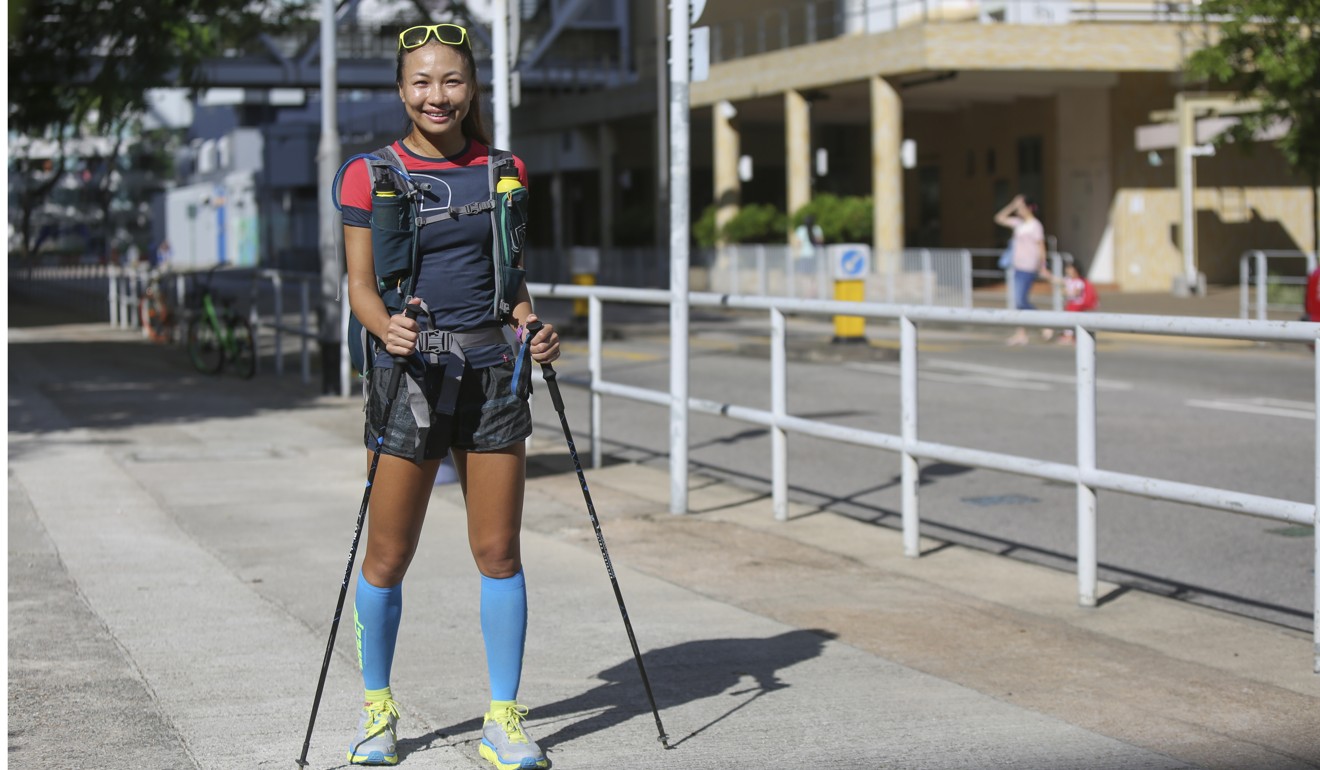
How Hong Kong runner in Ultra Gobi race, Samantha Chan, is preparing for gruelling non-stop 400km desert challenge
Representing the city, Chan has a big task on her hands, but she brushes off the worries of her friends and focuses on what’s important – training, navigation ... and facial masks
Samantha Chan Man-ha can see the lighter side of being invited to represent Hong Kong in the 400km non-stop, self-navigating Ultra Gobi race.
“Are you sure they don’t want to film some kind of Hong Kong Girl versus Wilderness-type reality TV show? Is this all a set-up? Dumping a Hong Kong girl in the middle of the Gobi Desert alone to see if she survives?”
Samantha Chan, ultrarunner from a Hong Kong housing estate whose modesty belies her achievements
Held in China’s northern Gansu province, the Ultra Gobi is punishing. Unlike races in which participants finish set stages over several days, stopping to sleep after each one, this one is non-stop.
Competitors run continuously from one rest station to the next, where a bag of personal equipment and food awaits them. They choose how long to stop.
Compounding the difficulty, there are no course markings to follow, so runners use a GPS receiver to navigate. The cut-off time is 150 hours.

This format is for those who like to “redline” in races: after getting through the first 250km on almost no sleep, the runners enter a state not unlike that which alpinists experience as they enter oxygen-scarce “death zones” higher than 8,000 metres. The body pulsates with pain, feet swell up and the mind, numb from sleep deprivation, plays tricks.

Chinese runners in past events have sworn they saw ghosts at night. As a hallucination, it makes sense – this part of the Gobi is littered with washed-out Han and Tang dynasty tombs. In places, shards of ancient pottery and human bones are mixed together with rock and sand underfoot.
How long is the cut-off? 149 hours? During this time, I will age 10 years. I saw the state Law Chor-kin was in after Ultra Gobi 2016
In June, Chan won a 100km race in Kanas, Xinjiang. Soon after, a member of the Ultra Gobi media team visited her in Hong Kong to present a personal invitation to the race. She tried to politely laugh it off, not thinking herself worthy of an invite. “I am just a baby compared to your invited athletes,” she told the envoy.
Her main concern is self-navigation. She explains that she has done Trailwalker, Oxfam’s 100km fundraising trek along Hong Kong’s Maclehose Trail, four times and she still gets lost. “I cannot navigate. I will get so lost in the Gobi, you will never find me.”
With 400km non-stop Ultra Gobi race, China pushes boundaries of extreme endurance
In past Ultra Gobi races, runners made navigational errors, having failed to learn how to use a hand-held GPS receiver before the race. Chan is taking this seriously. “I am learning how to use a GPS now. Actually, it is easy. Our mobile phone and gadget generation really should have no problems learning GPS functions.”

Her challenge is remembering tasks she tries to learn quickly. “I forget just as easily. When I was learning diving, my instructor was impressed by how fast I picked it up, but I would forget it all just as quickly. He was very frustrated. I must keep practising until right before the race.”
Her second concern is not ghosts, but skincare. The Gobi’s arid extremes – blazing sunshine and high ultraviolet light levels during the day, switching almost instantly to frosty nights – can suck the moisture out of a runner’s skin. “How long is the cut-off? 149 hours? During this time, I will age 10 years. I saw the state Law Chor-kin [Chan’s friend and fellow Hong Kong trail runner] was in after Ultra Gobi 2016.”

Chan, however, is no stranger to racing in deserts. In 2015, she finished 21st in one of the world’s most well-known desert races: the 250km, seven-day Marathon des Sables in the Sahara.
“I did it for fun, with friends,” she says, adding she was worried about not being able to wash her hair for a week while in the desert. She ended up taking a pink cat brush which she bought from a pet shop for HK$1.
Hong Kong ‘blade runner’ enters Gobi Desert race for charity with no illusions of a walk in the park
Her skincare solution for the Gobi run is almost as simple: she plans to stash facial masks in her drop bags. “I never miss [packing] my facial masks,” she says. “They will help me relax.”
Chan’s friend Law, who finished last year’s Ultra Gobi in eighth place, advises her to practise running with a backpack, master the GPS and be prepared for a mental battle. “She must also get top quality equipment – this will make it a lot easier,” he says.

Ultra Gobi rewards organisation and patience rather than speed. The training it requires can best be summed up as “spending time on your feet” and Chan has been adjusting her running practice accordingly.
“My normal training is not geared towards these very long races. I love running on track, going fast, and my mileage is usually quite low. But I am now doing longer, slower runs, spending more time running rather than working on speed.”
I cannot navigate. I will get so lost in the Gobi, you will never find me
Chan never follows a special diet and sees no reason to do so even in preparation for a 400km run. “I eat everything. And a lot. I do not eat like you expect a lady to eat,” she says. “There is an expression in Hong Kong that describes a tough, rough kind of guy, and my friends say that I eat like that.
“My friends are now jokingly motivating me with promises of taking me out for huge quantities of food after Ultra Gobi.”
Some of her friends have expressed concern over her decision to take part in an event where last year only three of the 50 runners were women – and only one finished. “Are you sure about that?” her long-time training partner Kenneth Chan asked when she told him she had accepted the invitation.
Chan brushes off their worries. She has a solid record in 100km races and placed well in the 250km Marathon des Sables, running just for fun with her cat brush.
That well-travelled brush will be on the starting line at the ruins of the Ashoka Temple in Guazhou County, Gansu, on September 28. Don’t think of it as her talisman, though – she believes in herself, not in lucky charms.

